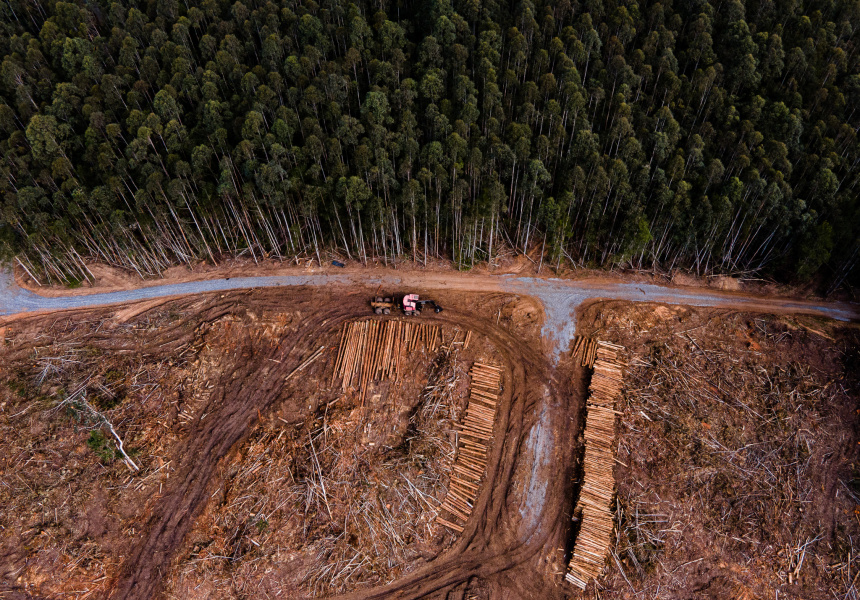It all started with a protest at Nambucca Heads on the mid-north coast of NSW, where photographer and videographer Calumn Hockey is based.
“I thought I’d go along and take my camera and capture some moments there,” he says. “The next thing you know, I entered one of my photos into the World Press Photography competition and [it] ended up getting in the top 25 per cent in the world.”
The image Hockey took that day in 2021 is a moody black-and-white shot of a protester holding a sign that reads, “We are on Gumbaynggirr Country”, while a loaded log truck churns up dust metres away. Though Hockey has spent much of his career shooting things like ultramarathons and trail runs that push the limits of human endurance, it’s narrative images like the one at Nambucca Heads that have helped him become known as a leading documentarian of Australian conservation.
Influenced by his father’s love of photography, Hockey is self-taught. Beginning with just a Go Pro, he’s since settled into using a Canon 5D Mark IV for shots like the one at Nambucca Heads, and recently, drones. “I do love working with a drone,” he says. “Just the areas that you can cover. I use a drone to capture those really big-scale things.”
That drone-captured scale is part of what makes another of Hockey’s pieces so powerful. Titled Up a Gum Tree, it shows two Bob Brown Foundation activists in Tasmania’s Takayna rainforest holding on to the last tree remaining in an otherwise desolate logging coupe. The image earned Hockey a highly commended ranking in the National Maritime Museum’s Wildlife Photographer of the Year competition in 2022.
“They had a tent set up at the top of this 50-metre-tall eucalyptus obliqua, an ancient tree that was probably 500 years old,” says Hockey. “I thought I’d put my drone up into the air with not really too much intention to get the shot. I was just capturing moments. But the moment I caught was two activists standing on a burl of the tree about 25 metres up, having a rest and assessing the damage of the forest around them.”
Hockey had spent time with the activists in the area, learning their stories and understanding why they were trying to stop the logging. He says getting among the action like that is a major part of his creative process. “I’m definitely more of an on-the-fly person,” he says. “I do my research for where I’m going and what’s going to be there, but I’ll probably be on the ground for an hour before I start taking any photos. I want to learn the story first and then progress from that.”
Hockey’s work is appearing at the annual Wildlife Photographer of the Year exhibition, held at the Australian National Maritime Museum in Sydney until October 31. He’ll also speak as part of The Glen Grant Photography Masterclass Series, a four-part series featuring some of the best photographers with works on display.
Ahead of the event he has one major piece of advice for aspiring photographers: get out there and do it. “I was never a fan of sitting in a room and learning other people’s photography,” he says. “It was Dad who told me, ‘You’re gonna take a hundred thousand photos and you might only take one good one’, and that’s how I started out. The only way you’re going to get better is just taking photos – that’s how it progressed. [Even] today I still take average photos. But you get better every single day.”
This article is produced by Broadsheet in partnership with The Glen Grant. The Glen Grant is an events partner for associated events with the Wildlife Photographer of The Year exhibition at the Australian National Maritime Museum.

